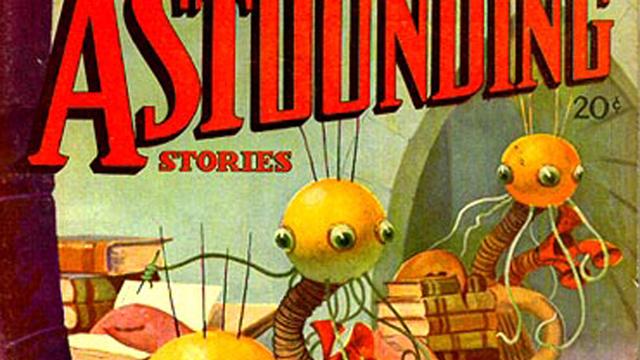Spherical, orb-like aliens are one of science fiction’s most beloved tropes, from countless golden age classics to appearances in Star Trek and Doctor Who. It’s unclear whether this is a case of science fiction inspiring innovation or simply great minds thinking alike, but now, prominent scientists are saying spheres may indeed be the way to go for interstellar travel.
Image: VintagePrintable
Earlier this year, Yuri Milner and Stephen Hawking announced their mind-boggling plan to send fleets of tiny, interstellar nano-craft hurling toward Alpha Centauri at up to 20 per cent the speed of light, after getting punted away from Earth by a giant laser array. No big deal — just a few minor, technical details to work out before Breakthrough Starshot becomes reality.
Included among those troublesome details: How to ensure that the spacecraft’s energy-harvesting light sail remains oriented with said laser array when the two devices are worlds apart.
Now, Harvard’s Zachary Manchester and Avi Loeb — both members of the scientific advisory committee for Breakthrough Starshot — have proposed a novel design that hearkens to a remarkably old school idea. Instead of a cone-shaped sail, as others have proposed, why not make it a ball?

A “chipsat”, an early version of the brain behind our future interstellar spacecraft. Image: Zac Manchester
“I looked at the proposed laser-propelled sails and found that none of them would be very stable,” Manchester, whose new paper on light-sail design is available on arXiv, told New Scientist. “But I found that a spherical sail would be, and it’s very elegant.”
The concept also calls for a laser system that’s weakest at the centre and stronger at the edges so, as Manchester put it, if the probe ever veers off track, the shape of the the sail and the laser will allow it to “automatically self correct”.
Of course, there are many other engineering problems that need to be tackled before we’re ready to launch a flock of interstellar scouts into the void. How would a chip-sized spacecraft store power? How would it send data back to Earth? What happens when the fleet gets bombarded by solar wind, or sucked into a wormhole and detained by inter-dimensional beings?
Daunting difficulties aside, it’s exciting to see credible scientists giving this problem thought, and moreover, coming to solutions that have deep roots in science fiction. Now, when do we get our hyperdrives?
